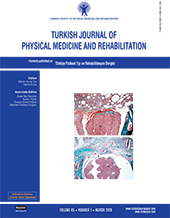The clinical aspects and effectiveness of suit therapies for cerebral palsy: A systematic review
Materials and methods: A literature search was performed in the PubMed, SCOPUS, Web of Science, and PEDro databases within the period from the establishment of the relevant database to July 2018. The articles were categorized according to their study design. We included studies published in peer-review journals focusing on the efficacy of suit therapies for CP and excluded review articles, duplications, non-related articles. A narrative synthesis approach was used, as it was not possible to classify extracted and analyzed data, and the overall effect size was unable to be calculated. Data regarding study subjects (number, age, CP type, Gross Motor Function Classification System [GMFCS] level), suit type, intervention including dose of suit therapy, outcome measurements, outcomes, adverse effects, and funding were extracted. The method introduced by Furlan, Pennick, Bombardier, and van Tulder was used to evaluate the risk of bias for the assessment of methodological quality of randomized-controlled trials (RCTs).
Results: A total of 29 studies were included of which 10 were Class I, eight were Class II-III, and 11 were Class IV studies. Studies were heterogenous in design, sample size, study population, and outcomes measured. The methodological quality score of RCTs varied between 4 and 10. The results of the high-quality RCTs showed that wearing the suit along with conventional therapy improved proximal stability, gross motor function, and gait. The Class II-III and IV studies supported the findings of the Class I studies.
Conclusion: The major improvements from the RCTs were seen in proximal stability, gross motor function and gait, although grading was unable to be done due to the heterogeneity of included studies. In order to obtain gains in the function, it is important to carefully consider intended use, patient selection criteria, and suit type.
Keywords : Cerebral palsy, dynamic elastomeric fabric orthosis, mechanism, orthotic garment, suit therapy
















